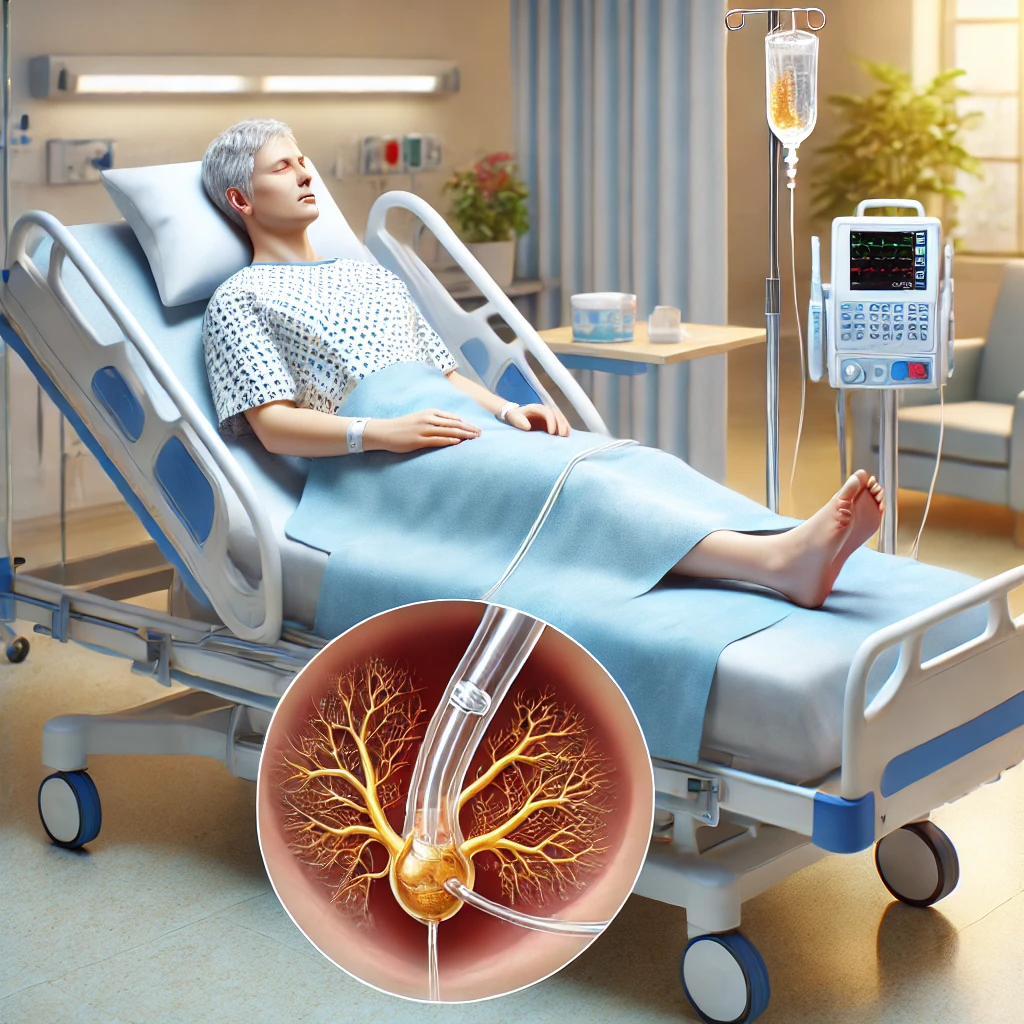Blockages in medical devices can be particularly distressing, especially when those devices are meant to aid in essential bodily functions. Bard catheters, widely used as indwelling urinary catheters, are designed to provide relief and support the urinary tract. However, complications can arise, with blockage in urinary catheters being a common and concerning issue. These blockages can cause severe discomfort, medical complications, and can lead to significant patient distress if recurrent blockage is not promptly addressed.
At Mass Tort America, we understand the challenges catheterized patients face when dealing with such complications. Our dedicated team is committed to supporting those affected by medical device failures. We aim to provide you with the necessary information to navigate these situations effectively and offer our expertise in pursuing justice for those impacted common complications made by defective Bard catheters.
Understanding Bard Catheter Blockages
Understanding the causes of a blockage in a catheter is crucial for preventing complications and ensuring effective treatment. Bard catheters, like other medical devices, are prone to blockage due to various factors. A primary cause of catheter blockages is the buildup of mineral deposits, commonly known as catheter encrustation. Encrustation occurs when urine components crystallize and form crystals, within the indwelling urinary catheter or tube, gradually narrowing the indwelling catheter lumen and eventually leading to a complete blockage. This can result in severe pain, urinary retention, and potential damage to the urinary tract.
Blockages in Bard catheters, whether they are indwelling catheters, suprapubic catheters, suprapubic catheter only, or intermittent catheters, can be caused by several factors. A urinary catheter blockage depends on factors such as the formation of crystals within the catheter, bacterial biofilm accumulation, and improper catheter maintenance. Crystals form when the urinary pH changes, leading to deposits that can obstruct the catheter’s eye holes. Long-term catheterized patients, especially those with a spinal cord injury, are at a higher risk of developing these blockages. When a suprapubic indwelling catheter correctly carries urine, any interruption in the flow should be addressed immediately by a nurse to prevent further complications.
Another significant cause of blocked catheters is blood clots. Patients with certain medical conditions, such as spinal cord injuries, or those who have undergone recent surgeries are at a higher risk of developing blood clots. These clots can obstruct the catheter, causing similar symptoms to those of a catheter encrustation. Moreover, improper catheter maintenance and inadequate fluid intake can also contribute to the formation of clots and subsequent blockages or blocked catheter. Ensuring the catheter is inserted and maintained properly is essential for reducing these risks.
Bacterial infections are another common cause of catheter blockages. Infections can exacerbate the issue of catheter blockages. Bacterial colonization of the catheter surface can lead to the formation of bacterial biofilms, which are complex colonies of bacteria embedded in a protective matrix. These biofilms can obstruct the catheter, making it difficult to manage and treat the infection. In severe cases, the blockage caused by biofilms can necessitate the removal and replacement of the catheter. For long-term indwelling catheters, regular catheter changes are necessary to prevent blockages. The drainage bag tubing must be kept clean and free from obstructions to allow urine to flow smoothly. Patients with serious spinal cord injuries must be particularly vigilant, as they often rely on catheters for extended periods. Immediate attention to any signs of blockage or spinal cord injury, such as reduced urine flow or unusual discomfort, can prevent severe complications and the need for a new catheter.
Recognizing The Signs Of A Blocked Catheter
Patients and caregivers need to be aware of the signs indicating a catheter blockage. Early recognition can prevent complications and ensure timely medical intervention. One of the most common symptoms is a reduction in urine amount or cessation of urine flow. If the urine output foley catheter significantly decreases or stops, it is a strong indicator that the catheter might be blocked.
Recognizing the signs of a blockage in a urinary catheter is crucial for preventing serious complications such as urinary tract infections and urinary catheter blockage damage. Common symptoms include a noticeable reduction or complete cessation of urine draining from the catheter into the drainage bag. This can occur with various types of urinary catheters, including indwelling catheters like the Foley catheter, intermittent catheters, and suprapubic catheters. Patients may also experience pain or discomfort in the bladder area, often accompanied by bladder spasms, which can indicate that the indwelling catheter is inserted incorrectly or is obstructed by a urinary tract or blockage.
Pain and discomfort in the lower abdomen or bladder area are also common signs of a blocked catheter. Patients may experience a persistent feeling of fullness, pressure, or pain, which can worsen if the blockage is not promptly addressed. Additionally, fever and chills can indicate an infection associated with a blocked bladder or catheter, necessitating immediate medical attention. Other signs to watch for include urine leaking around the balloon or catheter, indicating that the retention balloon is not functioning correctly or that a blockage is preventing urine from the bladder from flowing properly.
Another critical sign of urinary tract infection is urine leaking around the catheter insertion site. When the catheter is blocked, urine may bypass the obstruction and leak around the catheter insertion point. This leakage can cause skin irritation and increase the risk of infection. For individuals with spinal cord injuries who rely on catheters to collect urine, it is essential to check leg bag straps and ensure the catheter is correctly positioned to collect urine and prevent blockages. Patients should monitor for these symptoms and seek medical advice if they suspect a urinary catheter blockage depends them. Regular monitoring and prompt attention to these symptoms can help prevent severe complications and ensure the catheter continues to pass urine effectively.
Preventive Measures And Management Strategies
Preventing catheter blockages involves several strategies aimed at reducing the risk of encrustation, clot formation, and infections. Ensuring adequate fluid intake is one of the simplest yet most effective preventive measures. Staying well-hydrated helps dilute urine and reduce the concentration of minerals that can lead to encrustation. Regular catheter maintenance is crucial. This includes routine cleaning and timely replacement of the catheter as recommended by healthcare professionals. Using sterile techniques during catheter insertion and maintenance can significantly reduce the risk of infections and subsequent blockages. For patients prone to encrustation, certain medical treatments can help. For example, citrate solutions can be used to irrigate the whole catheter surface and dissolve crystalline deposits. Additionally, antibiotics may be prescribed to prevent or treat urinary tract infections, reducing the risk of biofilm formation and blockage in catheter.
Preventing a blockage in catheter use involves several strategies aimed at reducing the risk of complications such as urinary tract infections and bacterial biofilm formation. Ensuring that the catheter and drainage bag is inserted and maintained correctly is essential, as improper placement can lead to blockages and infections. Regularly cleaning the drainage bag tubing and monitoring the catheter’s eye holes for any obstructions are crucial steps. For long-term catheterized patients, especially those with a spinal cord injury, maintaining an adequate urinary pH can help prevent the formation of crystals within and around the catheter. These crystals form when urine components crystallize, potentially blocking the catheter and causing discomfort.
Proper catheter management also includes regular catheter changes, particularly for those with a long-term indwelling catheter. This helps to minimize the risk of bacterial infections and urinary tract infections, both of which can exacerbate blockages. Patients using intermittent catheters or suprapubic catheters must be vigilant about hygiene to prevent infections. For those with a spinal injury, it is vital to have a nurse immediately address any signs of blockage or reduced urine flow to prevent further complications or infection.
If a blockage is suspected, it may be necessary to replace the catheter with a new catheter to restore proper function. Regular check-ups with healthcare professionals can help manage common complications and ensure that the urinary catheter still continues to carry urine effectively, thereby improving the quality of life for long-term catheterized patients. Immediate attention to any signs of blockage, such as reduced urine flow or unusual discomfort, can prevent severe complications and ensure the urinary catheter still functions correctly. Staying proactive about catheter care and maintenance is key to preventing blockages and maintaining urinary health.
Understanding Catheter Types and Their Complications
Different types of indwelling urinary catheters can experience blockages and other complications. Indwelling catheters, such as Foley catheters, are commonly used for long-term urinary drainage. These catheters are inserted into the bladder and held in place by a small balloon. While effective, they can be prone to recurrent bladder blockage due to encrustation and infections. The formation of crystals within the catheter, often influenced by changes in urinary pH, can lead to blockages at the catheter’s eye holes. Proper maintenance and regular catheter changes are essential to prevent these issues and ensure that urine flows smoothly.
Intermittent catheters, which are inserted and removed several times a day, can also experience blockage. Though they reduce the risk of long-term urethra complications, users of intermittent catheters must still be vigilant about hygiene to prevent infections. These catheters can carry urine effectively if used correctly, but any signs of urethra blockage or infection should be addressed immediately. Suprapubic catheters, which are inserted directly into the bladder through the abdomen, offer an alternative for those who experience frequent urethral complications but still require diligent care to prevent blockages. Proper care and monitoring are crucial to avoid bacterial biofilm formation and other complications.
Bladder stones, bladder muscle issues, and the presence of infected urine can also contribute to catheter blockages. Regular monitoring and consultations with healthcare professionals are essential for managing these risks. Long-term catheterized patients, especially those with spinal cord injury, must ensure that their catheter is correctly positioned and maintained. Any interruption in the urine flow or discomfort should be reported to a nurse immediately. Regular cleaning of the drainage bag tubing and maintaining an adequate urinary pH can help prevent the formation of crystals that block urine draining through the catheter.
Understanding the different types of catheters and their potential complications is crucial for effective management and prevention of issues such as blockage in catheter use. Catheter complications can include blood clots, encrustation, and reduced urine flow, particularly in long-term indwelling catheter users. If a blockage is suspected, it may be necessary to replace the catheter with a new catheter to restore proper function. Immediate attention to any signs of blockage, such as reduced urine flow or unusual discomfort, can prevent severe complications and ensure the next catheter is inserted and continues to carry urine effectively. Proper catheter management improves the quality of life for catheter users and helps prevent common complications such as urinary tract infections and bloodstream infections.
Seeking Help And Next Steps
If you or a loved one experiences issues with a blocked Bard catheter, it is crucial to seek help from a healthcare professional. District nurses and other medical staff can provide immediate assistance and advice on managing intermittent a catheter blockage and preventing future blockages. In some cases, catheter changes may be necessary to restore the flow of urine to flow again and alleviate symptoms.
Patients using long-term catheters should have a management plan that includes regular check-ups and prompt attention to any signs of blockage or infection intermittent catheter side. Education on proper catheter care and awareness of potential complications can empower patients and caregivers to take proactive steps in maintaining catheter function and overall health.
For those dealing with spinal cord injuries or other conditions requiring long-term catheter use, specialized support and resources are available. Connecting with patient advocacy groups and accessing comprehensive care plans can help address the unique challenges associated with catheter use and prevent infection and blockages.
Why Choose Mass Tort America For Your Case?
Facing complications from a blocked Bard catheter can be overwhelming. At Mass Tort America, we specialize in representing patients affected by defective medical devices. Our experienced team understands the complexities of these cases and is dedicated to securing the compensation you deserve.
Working with us means gaining access to our extensive resources and expertise. We have a nationwide concierge team to assist patients from all over the country, coordinating care and legal support. Our goal is to ensure you receive the best possible outcome and alleviate the burden of dealing with medical device complications.
If you or a loved one is experiencing issues with a Bard catheter, don’t hesitate to reach out. Contact Mass Tort America at 800-356-4338 or visit our contact form at https://masstortamerica.com/contact/ for a consultation. Our team is here to provide the support and representation you need.



















